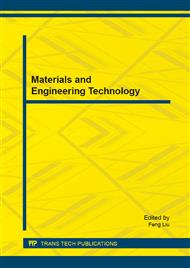[1]
Koichiro Niinuma, Unsang Park, and Anil K. Jain. Soft Biometric Traits for Continuous User Authentication [J]. Information Forensics and Security, 5(4): 771–780, (2004).
DOI: 10.1109/tifs.2010.2075927
Google Scholar
[2]
Xiaoli Zhou and Bir Bhanu. Integrating Face and Gait for Human Recognition at a Distance in Video [J]. IEEE Transactions on System, man, and Cybernetics, 37(5): 1119–1137, (2007).
DOI: 10.1109/tsmcb.2006.889612
Google Scholar
[3]
Li Yi, Ming Dong. Gait and face profile fusion based human identification at a distance in video [J]. Journal of Scientific Instrument, 2011, 32(2): 264—270.
Google Scholar
[4]
Xin Geng, Liang Wang, MingLi, QiangWu, and Kate Smith-Miles. Adaptive Fusion of Gait and Face for Human Identification in Video [J]. Applications of Computer Vision, 7(9): 1–6, (2008).
DOI: 10.1109/wacv.2008.4544006
Google Scholar
[5]
Ling linben, Chen Chaoying. Optimal Weight Distribution Principle Used in the Fusion of Multi-sensor Data, 2006: 37–39.
Google Scholar
[6]
Theekhanont. P, Miguet. S, Kurutach.W. Gait Recognition using GEl and Pattern Trace Transform [J]. Information Technology in Medicine and Education, 3(5): 936-940, (2012).
DOI: 10.1109/itime.2012.6291457
Google Scholar
[7]
Guo Lei, Wang Qiuguang. Research of Face Detection Based on Ad boost Algorithm and OpenCV Implementation [J]. Journal of Harbin University of Science and Technology, 2009, 14(5): 123–126.
Google Scholar
[8]
Yu-Xiong Wang, Yu-Jin Zhang. Nonnegative Matrix Factorization: A Comprehensive Review [J]. IEEE Transaction on knowledge and data engineering, 25(6): 1337-1351, (2013).
Google Scholar
[9]
Chengjun Liu. Learning the Uncorrelated, Independent, and Discriminating Color Spaces for Face Recognition [J]. Information Forensics and Security, 3(2): 213-222, (2008).
DOI: 10.1109/tifs.2008.923824
Google Scholar
[10]
Zhou Bin, Lin Xirong. Optimal weight of the score level multiple biometric feature fusion [J]. J T singhua Univ(Sci&Tech), 2008, 48(2): 192–195.
Google Scholar


